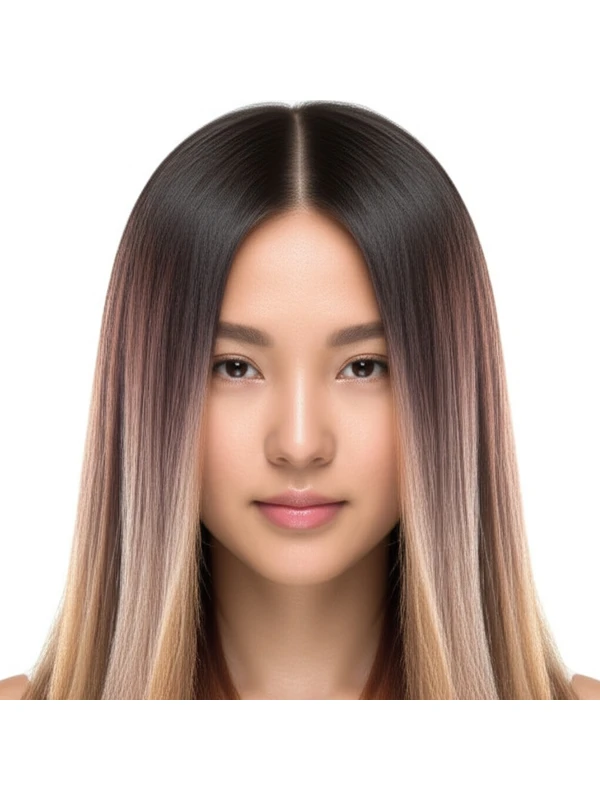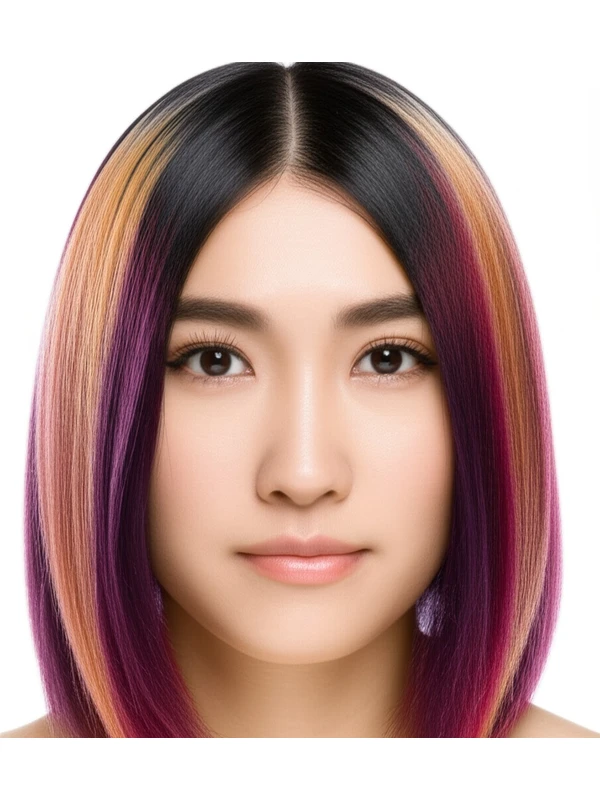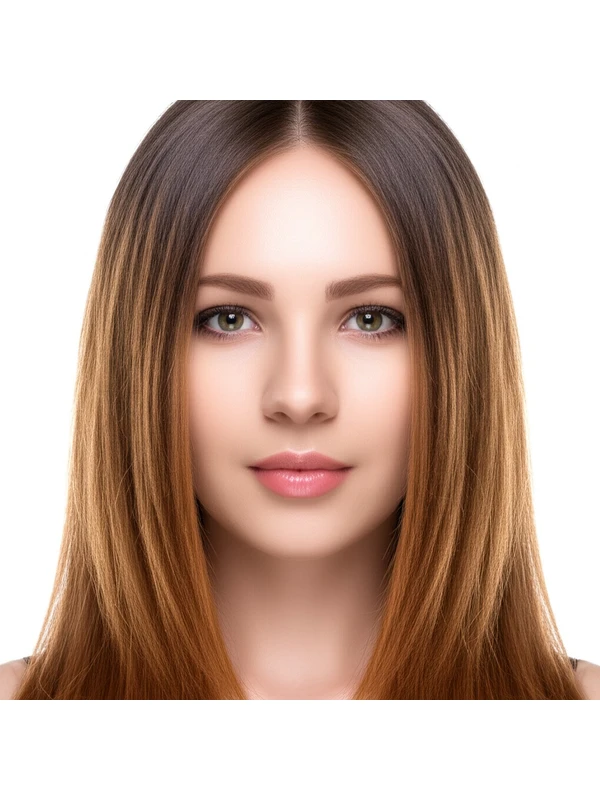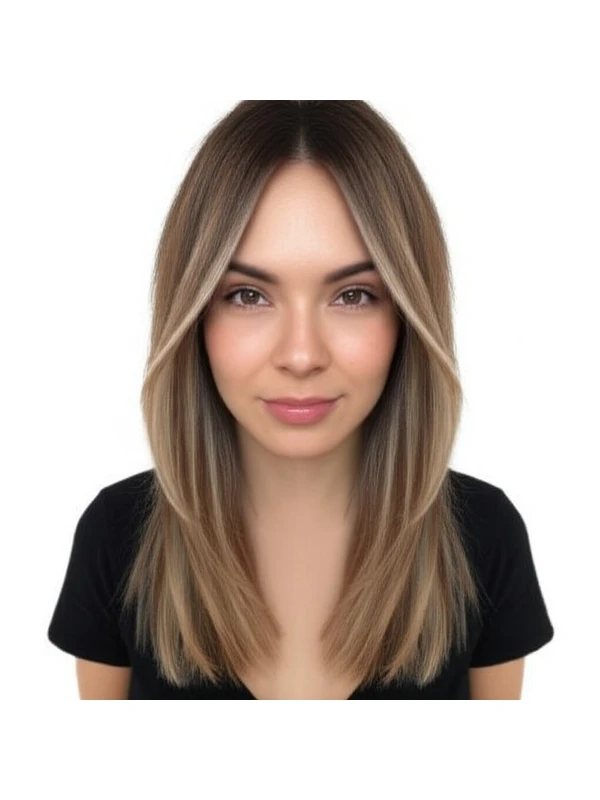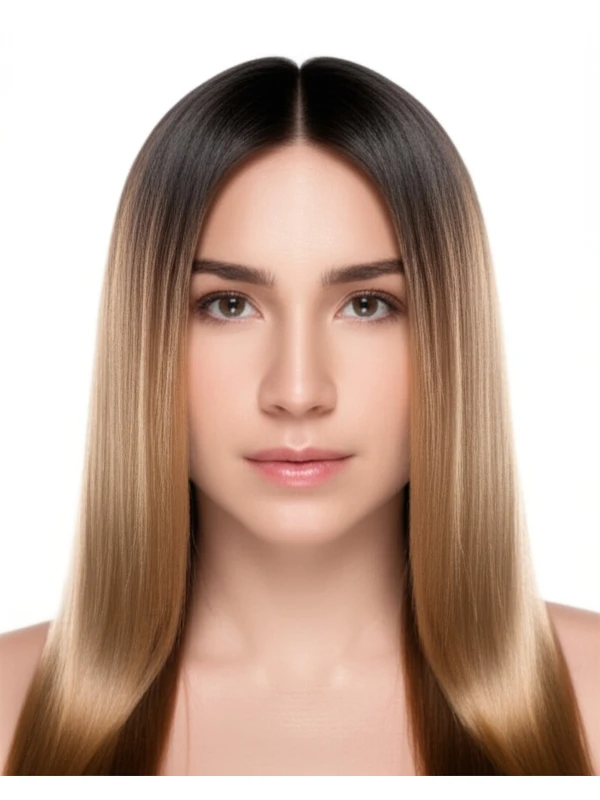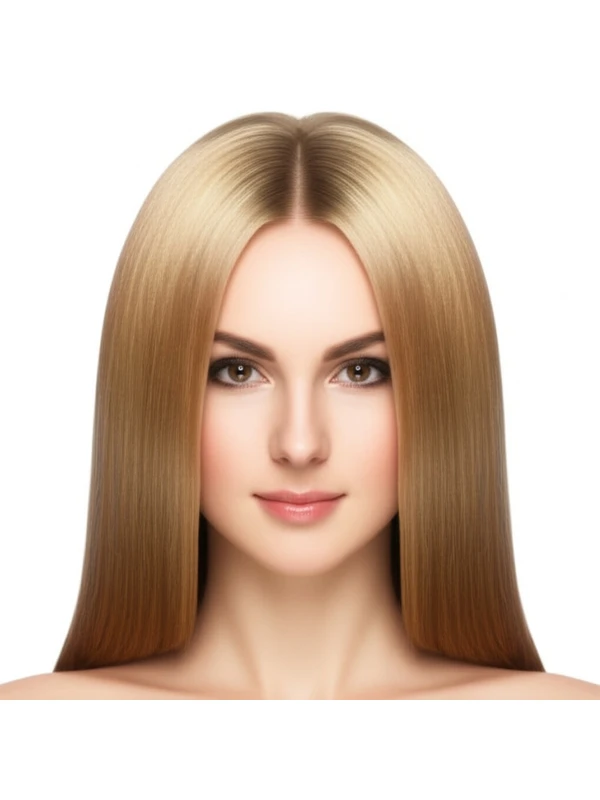#Color Melt: A Guide to Seamless Hair Dimension
Color melting is a popular hair coloring technique that creates a soft, blended transition between your natural hair color and highlights or lowlights. It’s all about creating an illusion of depth without harsh lines. Think sun-kissed, naturally dimensional hair. Let's dive into everything you need to know!
#1. What is Color Melting & How Does it Work?
Color melting isn’t about a single color; it’s about blending colors together seamlessly. The stylist applies highlights or lowlights (or both!) in sections, then “melts” them into the base hair color using gentle blending techniques.
Tools Used:
- Multiple Shades of Color: Typically 2-4 shades are used to achieve a natural look.
- Balayage Brush: A feathered brush is essential for applying paint precisely and softly.
- Blending Sponge/Brush: Used to soften the edges where color is applied.
- Gloves & Protective Cape: Standard salon safety measures.
The Process - Simplified:
- Sectioning: Hair is divided into manageable sections.
- Color Application: Highlights or lowlights are painted on, usually focusing on face-framing areas and throughout the hair.
- Melting/Blending: This is the key! The stylist uses a blending brush or sponge to gently diffuse the edges of the color, merging it with the natural base. Timing varies depending on desired intensity; typically 5–20 minutes.
- Rinsing & Styling: Hair is rinsed thoroughly and styled to showcase the blended result.
#2. Best Use Cases: What Goals Does It Achieve?
Color melting excels at several goals, making it a versatile option for many hair types and styles.
- Dimensionality: Adds depth and movement without harsh contrast.
- Root Blur: Creates a softer transition from roots to colored sections – great if you’re trying to extend time between salon visits.
- Face-Framing: Highlights or lowlights can be strategically placed around the face to brighten or soften features.
- Subtle Coverage: Can help minimize the appearance of grays, especially when blended with natural tones. It's not a full gray coverage solution but offers softening.
- Low Maintenance Look: The gradual blend means less noticeable regrowth as your hair grows out.
#3. Who is Color Melting Best Suited For?
Not every technique suits everyone! Here’s a breakdown to help you determine if color melting is right for you.
- Natural Hair Level: Works well on levels 2-7 (light brown to medium blonde). Darker hair may require pre-lightening, which can affect hair health.
- Undertone: Can be adapted for warm (golden, red) or cool (ashy, blue) undertones. Your stylist will choose shades accordingly.
- Hair Type/Texture:
- Straight Hair: Shows off the blended effect beautifully.
- Wavy Hair: Enhances natural wave patterns with added dimension.
- Curly & Coily Hair: Can be adapted, but requires careful consideration of curl pattern and density to avoid disrupting texture. Sectioning is crucial.
- Hair Density: Works on both thin and thick hair; the stylist adjusts the amount of color used accordingly.
- Hair Length: Suitable for all lengths – short bobs, long layers, everything in between!
- Lifestyle: Ideal for those seeking a low-maintenance look with subtle dimension who don’t want frequent salon visits.
#4. Color Melt vs. Similar Techniques
It's easy to get confused by hair coloring terminology. Here's how color melting stacks up against similar options:
- Balayage: Similar in application (freehand painting), but balayage typically has more contrast and a less blended look than a color melt.
- Foilyage: Combines balayage with foils to lift hair lighter, creating more intense highlights. Color melting is gentler and focuses on seamless blending rather than maximum lightness.
- Highlights (Traditional): Uses foils for precise placement of lightener; results in a more defined, contrasting look compared to the soft transition of color melting.
- Root Smudge: Focuses only on softening the root line after highlights or balayage have been applied. Color melting incorporates blending throughout the hair, not just at the roots.
- Shadow Root: A deliberately darker root area that blends into lighter mid-lengths and ends; similar to color melt in its blurred effect but with a more intentional contrast.
#5. Maintenance & Longevity: Planning for Success
Color melts aren’t permanent! Here's what you need to know about upkeep.
- Salon Timing: Typically every 3–6 months, depending on hair growth and desired intensity.
- Toner/Gloss Refresh: A gloss or toner may be recommended every few weeks to maintain the vibrancy of the color and correct any unwanted tones (e.g., brassiness).
- Grow-Out Behavior: Regrowth is soft and blended, minimizing harsh lines as your hair grows.
- Budget & Time Planning: Color melts are generally more time-consuming than a single-process color but less so than foilyage. Costs vary widely based on salon location and stylist experience (expect $150-$400+).
#6. At-Home Care Tips: Keeping Your Color Vibrant
Proper care is essential for extending the life of your color melt.
- Wash Cadence: Wash hair less frequently (2–3 times per week) to prevent fading.
- Cool Water Rinses: Hot water opens the cuticle, allowing color to escape. Rinse with cool or lukewarm water.
- Color-Safe Shampoo & Conditioner: Choose products specifically formulated for colored hair. Sulfate-free options are ideal.
- Heat Protection: Always use a heat protectant spray before using styling tools (blow dryers, straighteners, curling irons).
- Deep Conditioning Masks: Hydrate and strengthen your hair with weekly deep conditioning treatments.
#7. Pros & Cons of Color Melting
Pros:
- Low-maintenance regrowth
- Soft, natural-looking dimension
- Versatile – suitable for many hair types and levels
- Gentler on hair than traditional highlights (often)
- Adds shine and movement
Cons:
- Can be time-consuming in the salon
- May require multiple sessions to achieve desired lightness on darker hair.
- Color fading can occur if proper aftercare isn't followed.
- Not ideal for complete gray coverage
#8. Salon Consultation Script: What Your Stylist Will Ask
A good consultation is key to a successful color melt! Be prepared for your stylist to ask questions like these:
- What are your goals for this appointment? (e.g., more dimension, brighter face-framing)
- Do you have any photos of hair colors or styles that inspire you?
- Have you colored your hair before? If so, what processes were used?
- What is your current hair level and condition?
- Are there any areas of your hair that need special attention (e.g., gray coverage)?
- How much time are you willing to commit to at-home care?
#9. Frequently Asked Questions
- Can I get a color melt on previously bleached hair? It’s possible, but the condition of your hair is crucial. Your stylist will assess its health and determine if it can handle further processing.
- How long does a color melt take? Typically 2-4 hours, depending on hair length, density, and desired intensity.
- Is a color melt damaging to my hair? It’s generally less damaging than traditional highlights due to the gentler process; however, any chemical process can affect hair health.
- Can I do a color melt myself at home? While DIY kits exist, achieving seamless blending requires significant skill and experience. A professional is highly recommended for best results.
- What if my roots grow in too quickly? The blended nature of the color melt means regrowth won't be as noticeable, but you can schedule a root touch-up or gloss refresh to maintain the look.
- Will I need to change my shampoo and conditioner? Yes! Switching to color-safe products is essential for maintaining vibrancy and preventing fading.
- How do I know if a color melt is right for me? Consult with a stylist who can assess your hair type, level, and desired outcome. They'll provide personalized recommendations.
- Can I get highlights and a color melt? Absolutely! A color melt can be used to soften the edges of traditional highlights or balayage for an even more blended look.
